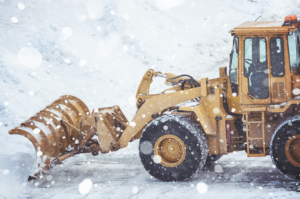Snow and Ice Removal Guide for Businesses
Posted December 18, 2023
Snow and ice removal is an essential aspect of property maintenance for commercial property owners. It prevents liability claims by keeping business premises safe. Snow-covered and slippery surfaces present dangers for workers, customers and other third parties. As noted by the U.S. Centers for Disease Control and Prevention, walking on ice is extremely dangerous and is the cause of many cold-weather injuries. Snow and ice can cause serious injuries, including broken bones, traumatic brain injuries and even death.

Therefore, businesses bear the responsibility of ensuring their premises are safe; if a third party suffers an injury due to an unsafe condition on the business’s property, the business may be liable for paying for their damages. This concept, known as premises liability, is in place to help ensure the public can safely access a business’s location.
This guide provides an overview of why snow and ice removal is necessary and how to address these weather hazards by detailing pre-storm preparation techniques as well as snow and ice removal strategies. It discusses the pros and cons of different removal methods and provides information on how businesses can develop a snow and ice removal program. This guide also describes how businesses can conduct snow and ice removal hazard assessments and provides a sample snow and ice removal checklist to assist businesses in keeping their premises safe.
Download the Snow and Ice Removal Guide for Businesses
